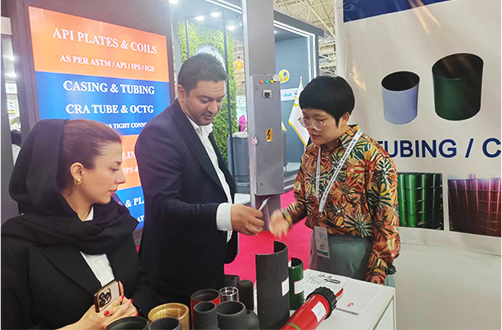- Afrikaans
- Albanian
- Amharic
- Arabic
- Armenian
- Azerbaijani
- Basque
- Belarusian
- Bengali
- Bosnian
- Bulgarian
- Catalan
- Cebuano
- Corsican
- Croatian
- Czech
- Danish
- Dutch
- English
- Esperanto
- Estonian
- Finnish
- French
- Frisian
- Galician
- Georgian
- German
- Greek
- Gujarati
- Haitian Creole
- hausa
- hawaiian
- Hebrew
- Hindi
- Miao
- Hungarian
- Icelandic
- igbo
- Indonesian
- irish
- Italian
- Japanese
- Javanese
- Kannada
- kazakh
- Khmer
- Rwandese
- Korean
- Kurdish
- Kyrgyz
- Lao
- Latin
- Latvian
- Lithuanian
- Luxembourgish
- Macedonian
- Malgashi
- Malay
- Malayalam
- Maltese
- Maori
- Marathi
- Mongolian
- Myanmar
- Nepali
- Norwegian
- Norwegian
- Occitan
- Pashto
- Persian
- Polish
- Portuguese
- Punjabi
- Romanian
- Russian
- Samoan
- Scottish Gaelic
- Serbian
- Sesotho
- Shona
- Sindhi
- Sinhala
- Slovak
- Slovenian
- Somali
- Spanish
- Sundanese
- Swahili
- Swedish
- Tagalog
- Tajik
- Tamil
- Tatar
- Telugu
- Thai
- Turkish
- Turkmen
- Ukrainian
- Urdu
- Uighur
- Uzbek
- Vietnamese
- Welsh
- Bantu
- Yiddish
- Yoruba
- Zulu
Choosing the Right Stainless Steel Coupling for Your Plumbing Needs
Stainless Steel Couplings A Comprehensive Overview
Stainless steel couplings are essential components in a wide range of industrial applications, providing the vital link between shafts or pipes. This article aims to explore the characteristics, types, benefits, and applications of stainless steel couplings, highlighting why they are a preferred choice in various industries.
Understanding Stainless Steel Couplings
Stainless steel couplings are used to join two shafts together, enabling power transfer between them. They can be crucial in applications where it is necessary to maintain alignment or manage torque transmission without significant backlash. The stainless steel material used in these couplings contributes to their robustness, corrosion resistance, and overall reliability.
Characteristics of Stainless Steel
Stainless steel is a high-grade, alloyed steel known for its remarkable resistance to corrosion and staining, making it ideal for applications in harsh environments. The primary elements—chromium, nickel, and molybdenum—enhance its durability against oxidizing agents such as moisture and chemicals. These characteristics make stainless steel couplings an excellent choice for sectors like food processing, pharmaceuticals, oil and gas, and wastewater treatment, where hygiene and material integrity are critical.
Types of Stainless Steel Couplings
There are several types of stainless steel couplings, each designed for specific applications and requirements. Here are some commonly used types
1. Rigid Couplings These are used to connect two shafts that require precise alignment. Rigid couplings transmit torque without any flex; however, they cannot compensate for misalignment, making them suitable for applications with perfectly aligned components.
2. Flexible Couplings Unlike rigid options, flexible couplings can accommodate some misalignment and shaft movement. They are often used in systems where vibrations or thermal expansions are common, making them ideal for pump and compressor applications.
3. Sliding Couplings These couplings allow for linear movement along the axis. They are useful in situations where there may be thermal expansion or contraction of the components being joined.
4. Universal Couplings Also known as hook-up or U-joints, these are designed to transmit torque between shafts that are not in the same line. They can accommodate angular misalignment, making them versatile for various configurations.
Benefits of Stainless Steel Couplings
The advantages of stainless steel couplings are numerous
stainless steel coupling

- Corrosion Resistance Their inherent resistance to rust and corrosion significantly extends their lifespan, making them ideal for both indoor and outdoor applications.
- Durability Stainless steel couplings can withstand high pressures, temperatures, and physical stresses, ensuring reliable performance in demanding environments.
- Hygiene In industries like food processing and pharmaceuticals, stainless steel's non-porous surface is easy to clean and maintain, preventing contamination and ensuring compliance with health regulations
.- Versatility With various types available, stainless steel couplings can be employed in a diverse range of applications, from automotive to instrumentation.
- Reduced Maintenance Their ability to resist wear and tear leads to lower maintenance costs over time.
Applications of Stainless Steel Couplings
Stainless steel couplings find applications in numerous industries due to their unique characteristics and benefits. Some notable areas include
- Food and Beverage Industry Used in processing equipment, conveyors, and mixers where hygiene is paramount.
- Pharmaceuticals Essential in machines and equipment that require strict sanitary conditions to prevent contamination.
- Oil and Gas Durable enough to handle demanding conditions, stainless steel couplings are often used in pipelines and drilling equipment.
- Water and Wastewater Treatment Their corrosion resistance makes them ideal for handling harsh chemicals and variable conditions.
- Automotive Employed in various vehicle components for both reliability and safety.
Conclusion
In conclusion, stainless steel couplings are vital components that support the functionality and longevity of various systems in numerous industries. Their strength, corrosion resistance, and versatility make them a preferred choice for engineers and manufacturers. As industries continue to push for higher standards of performance and reliability, stainless steel couplings will undoubtedly play an integral role in meeting these demands. Choosing the right coupling can significantly enhance operational efficiency, reduce downtime, and ensure the safety and reliability of systems across diverse applications.
-
Tubing Pup Joints: Essential Components for Oil and Gas OperationsNewsJul.10,2025
-
Pup Joints: Essential Components for Reliable Drilling OperationsNewsJul.10,2025
-
Pipe Couplings: Connecting Your World EfficientlyNewsJul.10,2025
-
Mastering Oilfield Operations with Quality Tubing and CasingNewsJul.10,2025
-
High-Quality Casing Couplings for Every NeedNewsJul.10,2025
-
Boost Your Drilling Efficiency with Premium Crossover Tools & Seating NipplesNewsJul.10,2025







